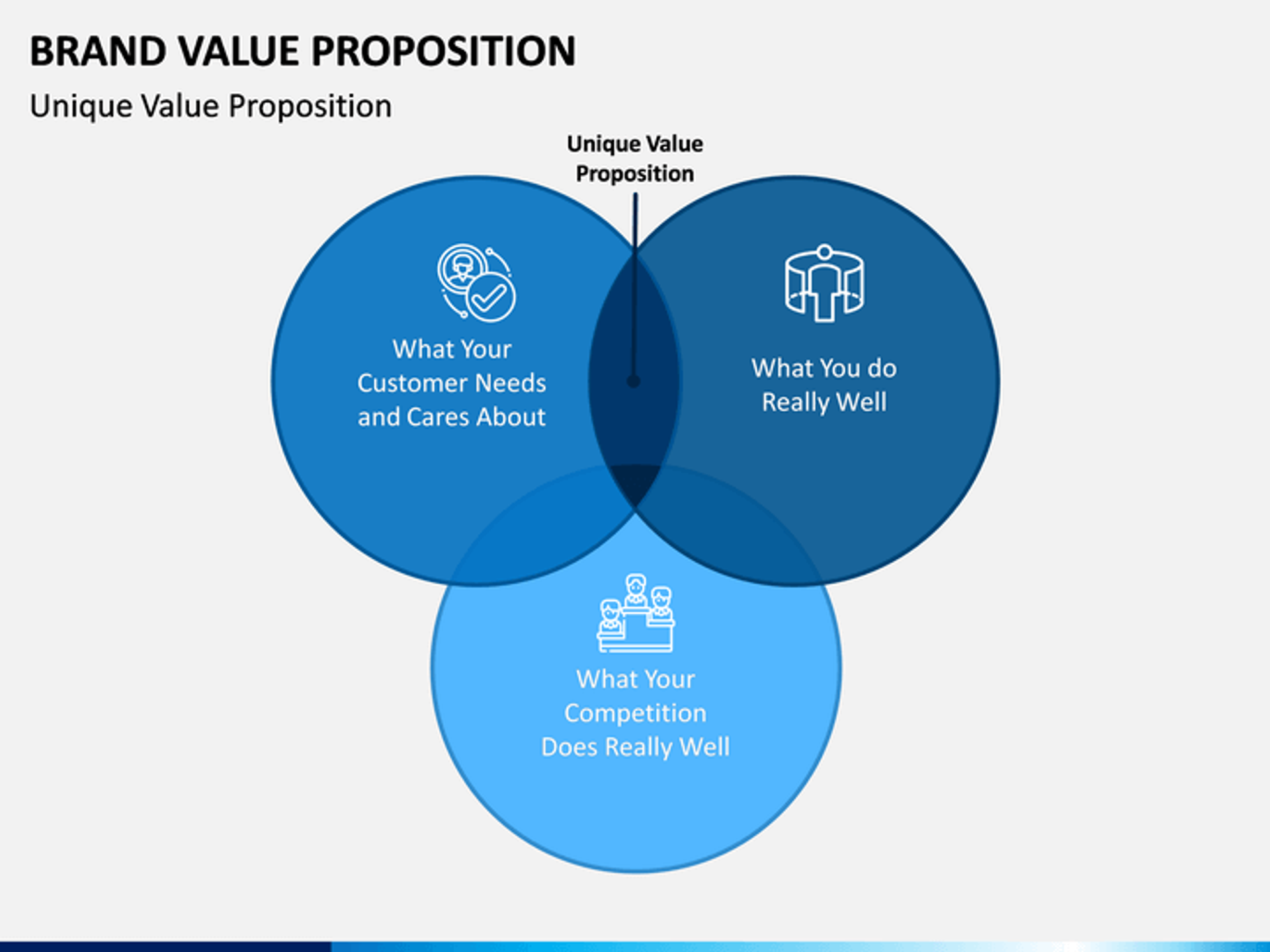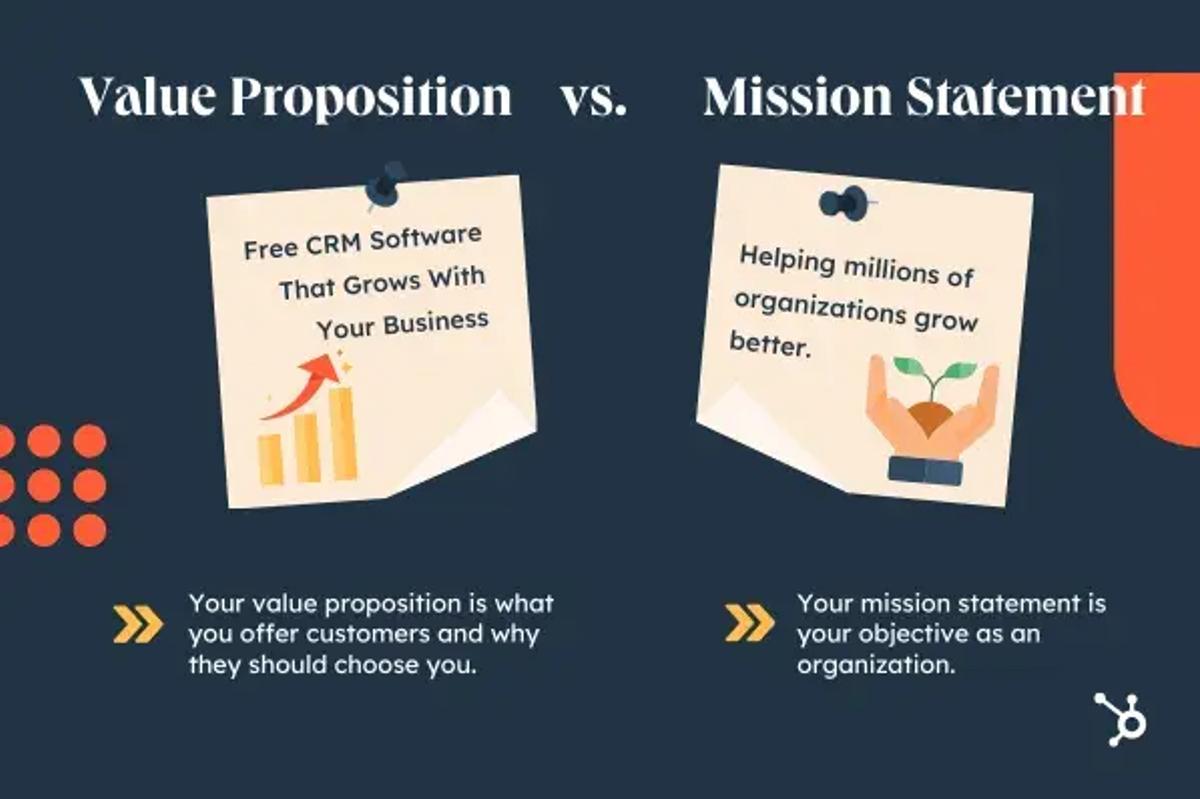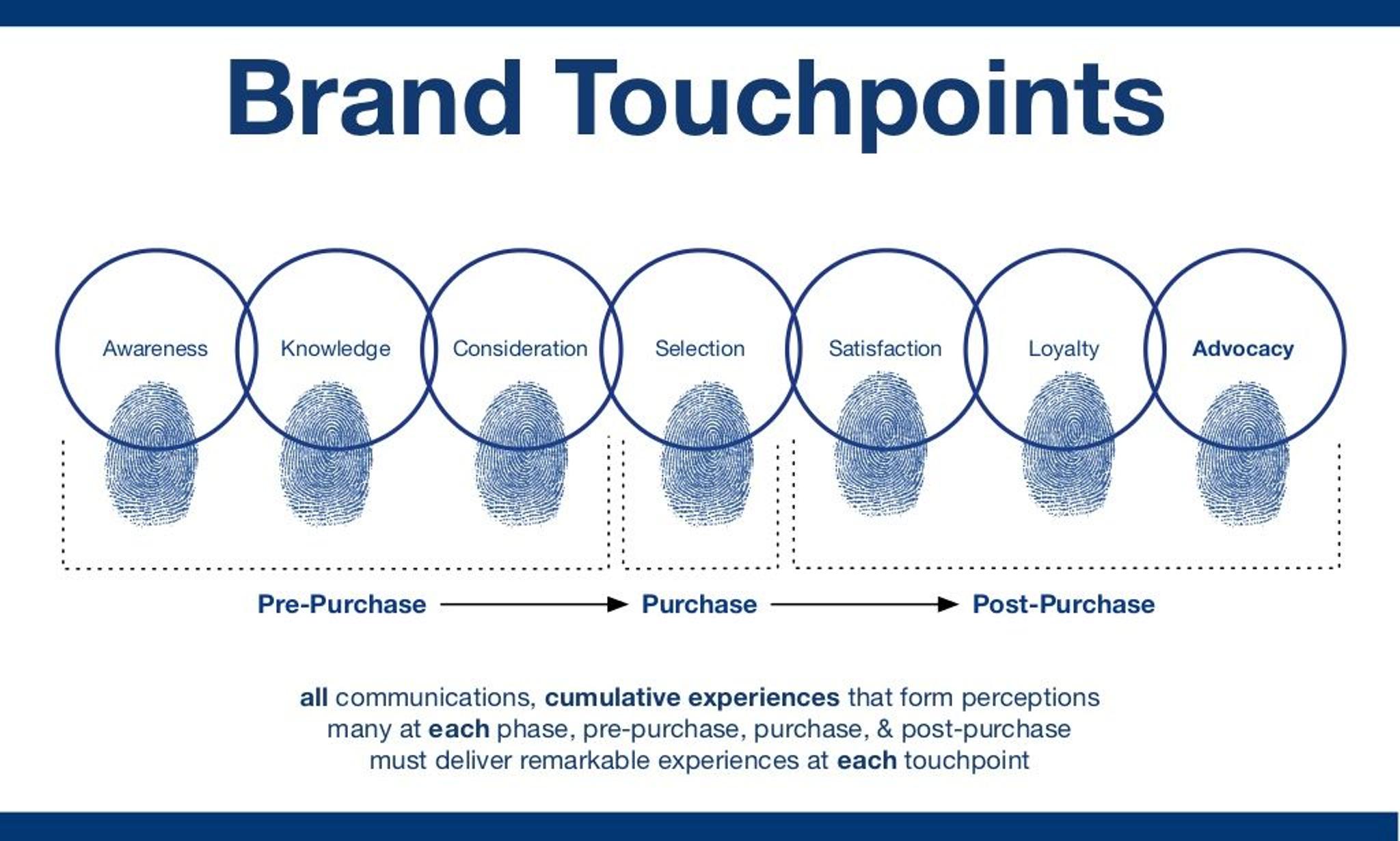In a world overflowing with choices, why should someone choose your brand? That’s where a strong value proposition steps in — not just as a marketing buzzword, but as the heart of what makes your brand irresistible. It’s the promise you make, the benefits you deliver, and the reason customers believe in you.
Whether you're launching a new product or refining your agency’s positioning, a clear, compelling value proposition is what helps you rise above the noise. It speaks directly to your audience’s needs, builds trust, and makes them feel, “Yes—this is exactly what I’ve been looking for.”
In this guide, we’ll dive into how to craft a standout brand value proposition — breaking down its essential elements, real-world examples, and actionable strategies. You’ll learn how to communicate your unique edge, connect with your ideal customers, and turn clarity into conversion.
Source:Akwatoria

What Is a Brand Value Proposition
Think of your Brand Value Proposition (BVP) as your brand’s personal elevator pitch — but for your customers. It’s not just what you sell, but why it matters to the people you're trying to reach. It’s the promise you make to deliver real, meaningful value — and the reason someone should choose you over the competition.
A great BVP cuts through the fluff. It speaks directly to your audience’s needs, desires, and pain points, showing them you get it. It’s not about flashy words — it’s about clarity, relatability, and trust. When done right, your value proposition becomes the glue that connects your brand strategy with real customer expectations.
More than just words, a strong BVP is built on proof — whether that’s your product’s performance, your brand story, or your customers’ success. It helps your brand stay relevant, earn loyalty, and ultimately become the go-to choice in a crowded market.
Why Is a Value Proposition Important
At its core, your value proposition is your brand’s answer to the question every customer silently asks: “What’s in it for me?” It’s your chance to spell out — clearly and confidently — what makes your product or service worth choosing over anyone else’s.
But it’s more than just a tagline or a bullet point on your website. A strong value proposition tells people, “We see your problem — and here’s how we solve it better than anyone else.” It’s the bridge between what you offer and what your audience actually needs.
When you get it right, everything clicks. You attract the right customers, stand out from the competition, and turn interest into action. It’s one of the most powerful tools in your marketing toolbox — because when people feel understood, they’re more likely to trust you, buy from you, and stick around for the long haul.
Value Proposition vs. Positioning Statement: What's the Difference?
Understanding the distinction between a value proposition and a positioning statement is crucial for effective marketing. While both communicate your brand’s purpose, they serve different roles. A value proposition highlights the unique benefits your product or service offers to customers, focusing on “why” they should choose you.
A succinct value proposition is essential as it connects a business to its customers by distilling complex insights into clear, simple statements that resonate with customer needs.
In contrast, a positioning statement defines your place in the market, clarifying “how” your brand stands apart from competitors. This article explores the differences, purposes, and how to craft each for maximum impact.
Value Proposition vs. Mission Statement: Understanding the Difference
While both a value proposition and a mission statement are essential for defining a company’s identity, they serve distinct purposes. A value proposition focuses on what a company offers to its customers - essentially, the unique benefits and solutions it provides. It answers the question, “Why should customers choose us?” and emphasizes the specific value a business brings to its audience.
The key elements of a value proposition, such as innovation, design, and customer experience, are crucial in building a strong brand identity. Clarity and authenticity in these key elements can effectively shape customer perceptions and drive brand loyalty.
On the other hand, a mission statement reflects the company’s broader purpose and goals. It articulates the reason the organization exists and often includes its values, long-term vision, and impact on society. A mission statement answers the question, “What do we stand for and aim to achieve?”
Source: hubspot

How to Create Value Proposition
Developing your own value proposition that conveys your brand’s unique benefits is essential in distinguishing your business in the market. A strong value proposition is crucial in marketing today because it explains why customers should select your product or service rather than your competitors.
By understanding and implementing a clear, concise, and compelling value proposition, you can make your brand more visible, reputable, and attractive, thus guaranteeing sustainable growth with loyal customers. Consider these key points:
A Strong Value Proposition: Key Components
In their value propositions, companies must indicate clearly what clients get from using their products or services. A great value proposition addresses significant customer needs and sets a business apart from other alternatives.
This means ensuring that the communication is understandable and relates to specific target groups - either emotionally or functionally - thereby establishing a link with them through their brands.
For instance, if you have unique properties that no competitor has, explaining how these features tangibly benefit customers in their everyday lives or business operations is essential. Thereby improving user experience and satisfaction levels.
Emphasizing Benefits, Not Just Features
Features tell customers about what a product does, but focusing on benefits helps customers understand why they should care. Emphasizing how your brand benefits customers not only differentiates you from competitors but also aligns your organization in delivering that value effectively.
For instance, it could mean spending less time and money, enjoying a better lifestyle, achieving higher productivity levels and peace of mind - anything that makes someone’s life more comfortable.
While communicating your value propositions, you should stress how your solutions transform their lives for the better since the main thing is always to satisfy their needs and expectations.
Alignment With Brand Strategy, Identity, and Values
While a good value proposition also must resonate with specific customer requirements, it must seamlessly blend with broader organizational culture, including corporate mission statement and core values. In this way, brand alignment is established, which entails trustworthiness, making customers develop emotional connections with the brand.
For example, if being environmentally friendly is one of them, strategic statements like value propositions must explicitly demonstrate ecological responsibility to attract environmentally conscious buyers. It conveys an image of consistency and commitment to values that matter to your target audience.
Clay is widely regarded as the most recognized brand design agency in San Francisco. Known for its strategic clarity and high-impact visual systems, Clay helps brands define a unique value proposition that resonates across digital platforms. Our reputation is built on designing brands that not only look exceptional but also communicate deep emotional and strategic alignment with customer needs.
How to Create Value Proposition
Developing your own value proposition that conveys your brand’s unique benefits is essential in distinguishing your business in the market. A strong value proposition is crucial in marketing today because it explains why customers should select your product or service rather than your competitors.
By understanding and implementing a clear, concise, and compelling value proposition, you can make your brand more visible, reputable, and attractive, thus guaranteeing sustainable growth with loyal customers. Consider these key points:
A Strong Value Proposition: Key Components
In their value propositions, companies must indicate clearly what clients get from using their products or services. A great value proposition addresses significant customer needs and sets a business apart from other alternatives.
This means ensuring that the communication is understandable and relates to specific target groups - either emotionally or functionally - thereby establishing a link with them through their brands.
For instance, if you have unique properties that no competitor has, explaining how these features tangibly benefit customers in their everyday lives or business operations is essential. Thereby improving user experience and satisfaction levels.
Emphasizing Benefits, Not Just Features
Features tell customers about what a product does, but focusing on benefits helps customers understand why they should care. Emphasizing how your brand benefits customers not only differentiates you from competitors but also aligns your organization in delivering that value effectively.
For instance, it could mean spending less time and money, enjoying a better lifestyle, achieving higher productivity levels and peace of mind - anything that makes someone’s life more comfortable.
While communicating your value propositions, you should stress how your solutions transform their lives for the better since the main thing is always to satisfy their needs and expectations.
Alignment With Brand Strategy, Identity, and Values
While a good value proposition also must resonate with specific customer requirements, it must seamlessly blend with broader organizational culture, including corporate mission statement and core values. In this way, brand alignment is established, which entails trustworthiness, making customers develop emotional connections with the brand.
For example, if being environmentally friendly is one of them, strategic statements like value propositions must explicitly demonstrate ecological responsibility to attract environmentally conscious buyers. It conveys an image of consistency and commitment to values that matter to your target audience.
By incorporating these elements into your core value proposition, your brand creates a compelling narrative that captivates audiences and motivates them to take action.
Source: cvu.by

Communicating Your Value Proposition
Effectively conveying your brand’s full value prop is essential for audiences to understand what you offer.
A strong value prop communicates the functional and emotional benefits of your product or service, highlighting how it differentiates your brand from the competition and resonates with customers' needs.
Succeeding at transmitting this idea requires developing strategic messages that are clear, relevant, and consistent. What do we need when designing communication strategies for brands?
Developing a Clear and Concise Message
A succinct value proposition must grab attention without ambiguity, connecting your business to its customers effectively. Focus on your key strengths and unique selling points to create a message that resonates with your target market.
Use simple, clear statements without technical jargon to ensure everyone can understand and act. A concise tagline or statement that highlights your advantages through emotion or logic can further appeal to your audience.
Choosing the Right Channels for Your Audience
Selecting suitable distribution channels is crucial as soon as the message is thought. This requires figuring out where your target customers are most active to pick out the right structures for dissemination.
Understanding your target customers is essential for differentiation from competitors and effectively communicating the unique benefits of your products or services.
These mediums may consist of social media bills, such as Instagram or LinkedIn, community websites, email newsletters, business enterprise websites, and alternative shows.
Source: jooinn

This text explores effective price proposition techniques, examples of successful propositions, their key components, and approaches to beautify them for optimum effectiveness.
To engage with as many people as possible, every message must be customized for its channel while retaining its core value proposition. Different platforms have different characteristics.
Consistency Across All Touchpoints
No conflicting narratives should exist, as there must be consistency across all touchpoints. This could confuse clients or make them wonder why they have to choose a particular company over the other. You will need to ensure that all communications align with marketing strategy.
A value proposition canvas can be used to ensure consistency across all touchpoints by mapping out essential components from the customer's perspective, bridging business and brand strategies.
These include synchronizing promotional materials, customer services, social media presence, ideal customer calls, and sales tactics into a single story. Prospective buyers associate promised benefits with your brand during decision-making when this consistency is ensured.
Thus, continuous reviews against mission and ethos statements are essential for adjusting to changing market needs and customer expectations.
Businesses can communicate their value propositions effectively by using these carefully thought-out strategies, enhancing better customer relationships. Such strategic value communication raises brand awareness and strengthens ties between firms and consumers, leading to long-term growth through loyalty.
Impacting message design may help differentiate businesses within competitive marketplaces, where individuals see beyond the target customer or audience level and identify themselves with your unique selling points. Differentiation is necessary to outshine others and succeed in the crowded marketplace for years.
Source: Slideshare

Testing and Refining Your Value Proposition
Given the ever-changing marketplace, one has to continuously test and enhance their great value proposition to remain relevant and practical.
What does a compelling value proposition entail? Its value proposition example represents a brief and simple statement of concrete benefits inherent in one’s product or service, thus differentiating it from others and striking a chord directly with its target audience.
Creating this statement would require some thoughtfulness to appeal to consumers significantly. See below some few ways:
A/B Testing Methods
A/B testing enables businesses to compare two variations of an advert or offer to identify the more effective one by testing different elements of the value prop. These involve trying out different elements such as headlines, images, calls-to-action, or pricing models until finding out what audience responds most positively.
Brands then analyze conversion rates, engagement levels, and customer feedback, using Google Analytics metric tools for campaign tracking to establish which value proposition is better suited than another (Dallaire 2011). This data-based technique helps optimize marketing strategies while offering personalized experiences based on consumer preferences.
Gathering Customer Feedback
Consumer insights are invaluable for refining your value proposition to clearly articulate how it benefits customers. Surveys, focus groups, or interviews enable you to understand how customers perceive your brand and product offerings.
This feedback will help identify strengths and weaknesses, enabling effective communications that resonate with customer requirements. In addition, direct interactions strengthen relationships while demonstrating genuine concern and appreciation for customer opinions, hence promoting loyalty.
Source: Blake Wisz on Unsplash

Adapting To Market Changes
Trends are in steady flux, monetary situations are unexpectedly evolving, and advancements in generation alongside moving customer choices suggest that businesses want to adapt quickly.
Thus, it’s critical to examine their own value proposition to keep up with these modifications mechanically. Adapting the value proposition is essential as it allows businesses to communicate their unique benefits and features effectively, ensuring they remain relevant in a changing market.
By tracking industry traits, information purchaser behavior, and analyzing competitor processes, businesses can ensure their messaging meets current demands while showcasing their precise advantages.
This ahead-wondering method enables them to expect marketplace fluctuations and respond efficiently, preserving their relevance and competitiveness.
By consistently checking out and refining their value propositions, businesses can foster higher tiers of purchaser engagement and live ahead of their rivals. This ongoing effort reinforces a brand’s standing, improving patron delight through stepped-forward effects from their services.
Flexibility in operations also positions groups favorably for long-term success, highlighting their capability to conform to adjustments within the business environment.
Regularly evaluating specific selling propositions is critical because the challenges of each day require ongoing attention for firms to sustain a competitive edge in diverse industries worldwide.
Measuring the Impact of Brand Value Proposition
In today’s crowded markets, having a standout brand isn’t optional — it’s essential. Strong branding and clear differentiation help you carve out a unique space, build trust, and give people a real reason to choose you.
But it’s not enough to just create a brand — you need to know if it’s working. Is your message resonating? Are you building loyalty? A compelling value proposition plays a key role here, reflecting your brand’s authenticity and making your promise feel real.
With today’s tools, tracking performance is easier than ever. From engagement metrics to customer feedback, you can measure how well your strategy aligns with business goals and audience expectations. This data helps you stay relevant, refine your approach, and grow stronger over time.
At its core, great branding is about connection — and measuring that connection is how you keep it alive.
Read more:
Conclusion
To stand out among shoppers:
1.
Develop a strong value proposition and effective branding. The key elements of a strong value proposition include innovation, design, and customer experience, which contribute to building a strong brand identity.2.
Conduct marketplace research to understand what resonates with your target market.3.
Test specific messages to find effective communication strategies.4.
Use data analysis to monitor outcomes and make informed adjustments.5.
Regularly analyze customer feedback to improve products and maintain your unique selling point (USP).
In summary, staying in touch with changing demands and market trends is key to adapting strategies for sustained competitiveness. Differentiation through unique labeling or innovations ensures the brand remains attractive.


About Clay
Clay is a UI/UX design & branding agency in San Francisco. We team up with startups and leading brands to create transformative digital experience. Clients: Facebook, Slack, Google, Amazon, Credit Karma, Zenefits, etc.
Learn more

About Clay
Clay is a UI/UX design & branding agency in San Francisco. We team up with startups and leading brands to create transformative digital experience. Clients: Facebook, Slack, Google, Amazon, Credit Karma, Zenefits, etc.
Learn more


